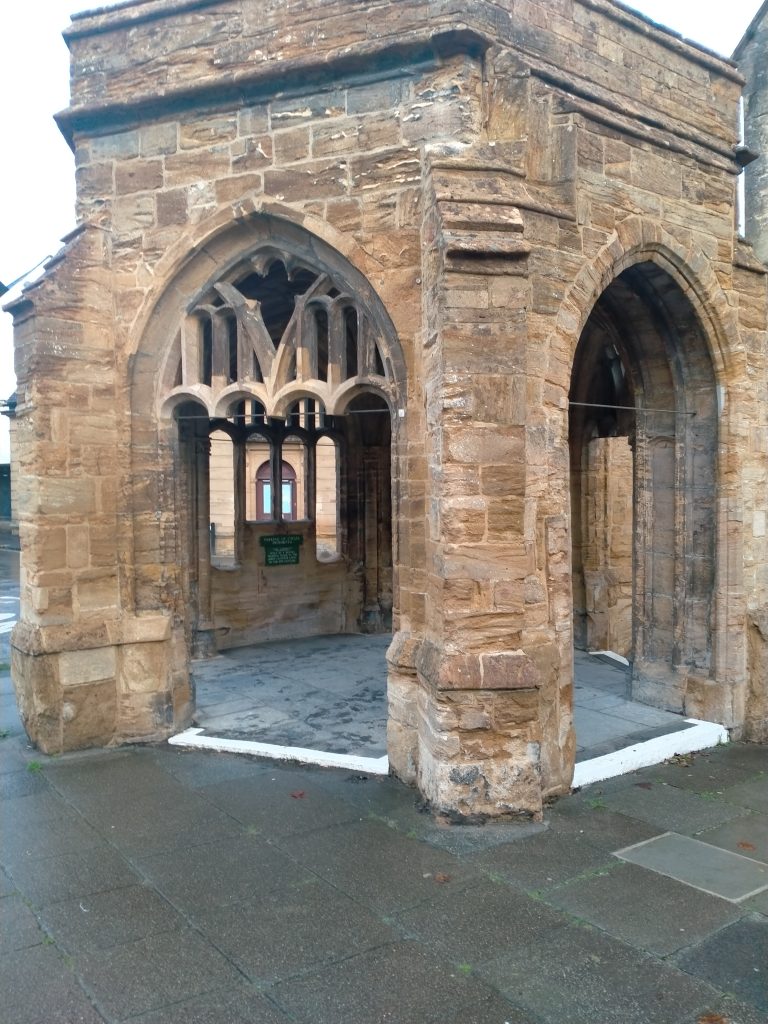By Tim Lambert
Early Sherborne
The small market town of Sherborne was founded by the Saxons in the 7th century when they conquered this part of England. Its name comes from the Saxon words scir burne, meaning clear stream.
For centuries Sherborne was an important settlement. In 705 Aldhelm became the first bishop of the western part of the kingdom of Wessex (Dorset, Somerset, and Devon) and he had his seat in Sherborne. He built a cathedral there. Two elder brothers of Alfred the Great were probably buried in the Cathedral and it’s possible that Alfred himself was educated in Sherborne.
Until the time of King Alfred in the late 9th century, Sherborne was the capital of Wessex. But Alfred moved his capital to Winchester and the bishop moved his seat to Old Sarum, near Salisbury in 1075. The Cathedral in Sherborne became a Benedictine Abbey in 1098.
At the time of the Domesday Book in 1086 Sherborne was quite a large settlement. It probably had a population of several hundred. That hardly seems large to us but most villages in England would only have 100 or 150 inhabitants. Sherborne had 8 mills to grind grain to flour.
In the Middle Ages Sherborne was a busy little market town. The market was probably held on Cheap Street. The old English word ceap meant trade or bargain. It became our word cheap.
In the 12th century, the bishop of Salisbury built a fortified palace now called Old Castle in Sherborne.
During the Middle Ages Sherborne grew larger. Newland was laid out in the 13th century. Medieval Sherborne, like many towns in this part of England, was dominated by the cloth industry. St John’s Almshouse was built in 1447.
Henry VIII dissolved Sherborne Abbey in 1539. The townspeople bought the Abbey Church of St Mary to use as their parish church. The Conduit originally stood in the cloister of the Abbey where the monks used it for washing. After the abbey was dissolved it was moved to its present position.

During the 16th and 17th centuries, Sherborne continued to be dominated by the cloth industry. Sherborne School was founded in 1550. In 1594 Sir Walter Raleigh built a mansion, now called Sherborne Castle.
In the 17th century, there was a civil war between the king and parliament. Sherborne Castle was besieged twice. Afterward, it was partly destroyed by the parliamentarians. Today only ruins remain.
Modern Sherborne
In the late 18th century and the early 19th century, a silk industry flourished in Sherborne. However, it declined later in the 19th century and it ended during the Second World War.
Nevertheless, in the 19th century, Sherborne continued to thrive. Amenities in the town improved. Sherborne gained gas light in 1823. Sherborne railway station opened in 1860. Yeatman Hospital opened in 1866.
Unfortunately, Sherborne suffered an air raid on 30 September 1940, and 18 people were killed.
In 1801 Sherborne had a population of over 3,000. By 1871 Sherborne had risen to over 6,000. By 1931 it was over 7,000. Meanwhile, in 1895 Sherborne gained an urban district council. Pageant Gardens opened in 1906. Paddock Garden opened in 2005.
Today Sherborne is a charming little town with a population of almost 10,000.